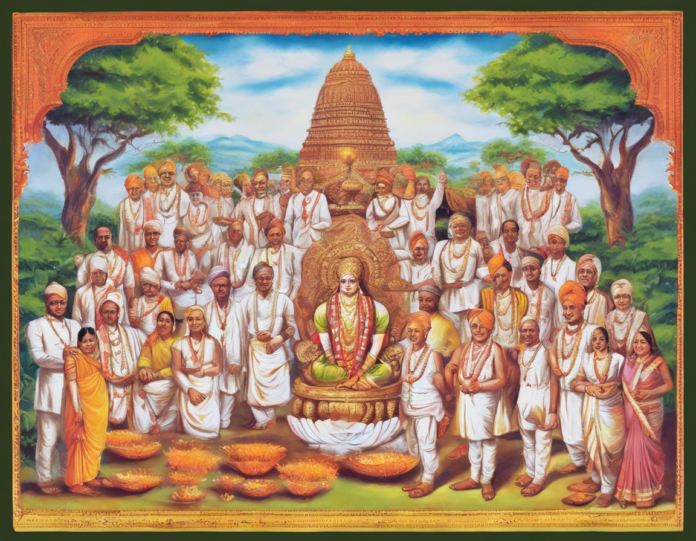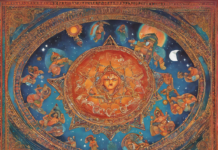The Mahabharata is one of the most significant and revered epics in Indian mythology and holds a cherished place in the hearts of people across the world. With a narrative that spans over 100,000 verses, the Mahabharata is not just a story but a profound scripture that imparts timeless wisdom and lessons on life, politics, ethics, and morality. Let’s delve into the epic tale of the Mahabharata and explore its various dimensions.
The Origins of the Mahabharata
The Mahabharata is believed to have been composed by the ancient sage Veda Vyasa. It is said to be written in the Sanskrit language and is divided into 18 sections known as Parvas. The epic is a detailed account of the Kurukshetra War and the events leading up to it. It is said to have been narrated by the sage Vaishampayana to King Janamejaya, the great-grandson of Arjuna.
The Central Characters of the Epic
1. Pandavas and Kauravas
The Mahabharata revolves around two sets of cousins, the Pandavas, and the Kauravas. The Pandavas – Yudhishthira, Bhima, Arjuna, Nakula, and Sahadeva, are the sons of Pandu and his wives Kunti and Madri. The Kauravas, on the other hand, are the hundred sons of Dhritarashtra, with Duryodhana being the eldest and most prominent among them.
2. Lord Krishna
Another central character in the Mahabharata is Lord Krishna, who serves as the charioteer of Arjuna in the Kurukshetra War. His teachings to Arjuna on the battlefield are compiled in the holy scripture Bhagavad Gita, which is a profound philosophical dialogue on duty, righteousness, and dharma.
The Great Kurukshetra War
The pivotal event in the Mahabharata is the Kurukshetra War, fought between the Pandavas and the Kauravas for the throne of Hastinapura. The war lasted for 18 days and saw the annihilation of numerous warriors and kings. The Bhagavad Gita, as mentioned earlier, was delivered by Lord Krishna to Arjuna on the battlefield, guiding him through moral dilemmas and confusion.
Central Themes and Teachings
1. Dharma
One of the central themes of the Mahabharata is dharma, which refers to righteousness, duty, and moral obligations. The epic explores various facets of dharma through the actions of its characters and the dilemmas they face.
2. Karma
The concept of karma, the law of cause and effect, is also prominently featured in the Mahabharata. The characters in the epic reap the consequences of their actions, emphasizing the importance of ethical conduct and responsibility.
3. Family and Relationships
The Mahabharata delves deeply into the complexities of familial relationships, loyalty, love, jealousy, and rivalry. The dynamics between the Pandavas and the Kauravas, as well as their interactions with other characters, showcase the intricacies of human emotions.
4. Politics and Power
The epic also delves into the realms of politics, governance, and power struggles. The rivalry between the Pandavas and Kauravas for the throne of Hastinapura highlights the consequences of unchecked ambition and greed.
Lessons from the Mahabharata for Modern Times
The Mahabharata, despite being thousands of years old, holds relevance and offers timeless lessons for contemporary society. Some of the key takeaways from the epic include:
- Importance of righteousness and moral conduct
- Value of duty and responsibility
- The transient nature of life and material possessions
- The significance of family bonds and relationships
- The consequences of actions and the law of karma
Frequently Asked Questions (FAQs)
1. What is the significance of the Mahabharata in Hindu mythology?
The Mahabharata is considered one of the two major epics of Hindu mythology, alongside the Ramayana. It is revered for its rich narrative, philosophical depth, and moral teachings that continue to inspire generations.
2. Who is the author of the Mahabharata?
The ancient sage Veda Vyasa is traditionally credited with composing the Mahabharata. He is also believed to be the compiler of the Vedas and the author of numerous other scriptures.
3. What is the Bhagavad Gita, and how does it relate to the Mahabharata?
The Bhagavad Gita is a sacred text that forms a part of the Mahabharata. It is a philosophical dialogue between Lord Krishna and Arjuna on the battlefield of Kurukshetra, where Krishna imparts spiritual wisdom and guidance to Arjuna.
4. What are some popular adaptations of the Mahabharata in literature and media?
The Mahabharata has been adapted into various forms of literature, theater, television, and film. Some popular adaptations include Ramesh Menon’s retelling, the TV series Mahabharat, and Peter Brook’s theatrical production.
5. What are some lesser-known stories and subplots in the Mahabharata?
Apart from the central narrative of the Kurukshetra War, the Mahabharata contains numerous subplots and stories, such as the tale of Ekalavya, the trials of Draupadi, and the adventures of the Pandavas during their exile.
In conclusion, the Mahabharata stands as a monumental epic that continues to captivate and enlighten readers with its profound teachings, intricate characters, and timeless wisdom. Its enduring legacy serves as a guiding light for navigating the complexities of life and society, making it a treasure trove of knowledge and inspiration for all who seek to unravel its epic tale.









